Winter is a difficult period for our health. The body requires more attention and care, because it has to fight cold, lack of sunlight, vitamin deficiency and attack of viruses.

Uztura speciālistu un veselības treneru asociācijas (ANCH) prezidente
To cope with such a load, it is necessary to eat a full diet, getting useful substances. You need to add foods rich in vitamin D, unsaturated fats, protein and root vegetables to your menu to support immunity and body function.
Root vegetables are the basis of the fall and winter diet of almost every resident of Russia. Stocks of food provisions during the cold season necessarily include potatoes, carrots, beets and other gifts of the harvest season.
Such products are rich in useful substances that are necessary for the body during the period of avitaminosis. They contain nutrients (sugars, mineral salts, inulin and others), carbohydrates, fiber and vitamins.

The content of vitamins in the product depends largely on the way it is prepared. It is recommended to bake root vegetables or eat them raw to get the maximum amount of vitamins and fiber without increasing the glycemic index.
The glycemic index is a measure of the rate at which foods are broken down in the body and converted into glucose and the amount of insulin secreted by the pancreas in response to that food.
In winter, I recommend diversifying your menu and adding dishes with carrots, rutabaga, yams, turnips and celery.
Carrots
Juicy root vegetable with an abundance of vitamins, macro- and microelements. The product has a tonic effect on the body, maintains strength, helps to fight gallstone disease and extra pounds.
Carrots have a laxative effect, it contains a lot of fiber and 87 g of water per 100 g of product, which has a positive effect on the process of weight loss.
Regular consumption of this vegetable helps to cleanse the intestines and improve its work. The root vegetable has a record content of β-carotene: if you eat up to 200 g of the vegetable per day, you can fill the daily requirement of vitamin A.

To better absorb carotene, eat carrots together with unsaturated fats, for example, dress your salad with olive oil.
Important: carrots should not be eaten by people who are allergic to it, and limit the use should be patients with enteritis (inflammatory lesion of the mucous membrane of the small intestine), gastric ulcer and duodenal ulcer.
Turnip
Delicious fruit with a rich vitamin and mineral composition, which is not lost even with prolonged storage. This root vegetable helps to support immunity in winter thanks to the abundance of vitamins A, C, B, B9 and PP, calcium, essential oils.
Fresh turnip juice has a soothing, diuretic, antiseptic and anti-inflammatory effect. The product effectively dissolves kidney stones, helps stabilize fat metabolism, improves intestinal function.
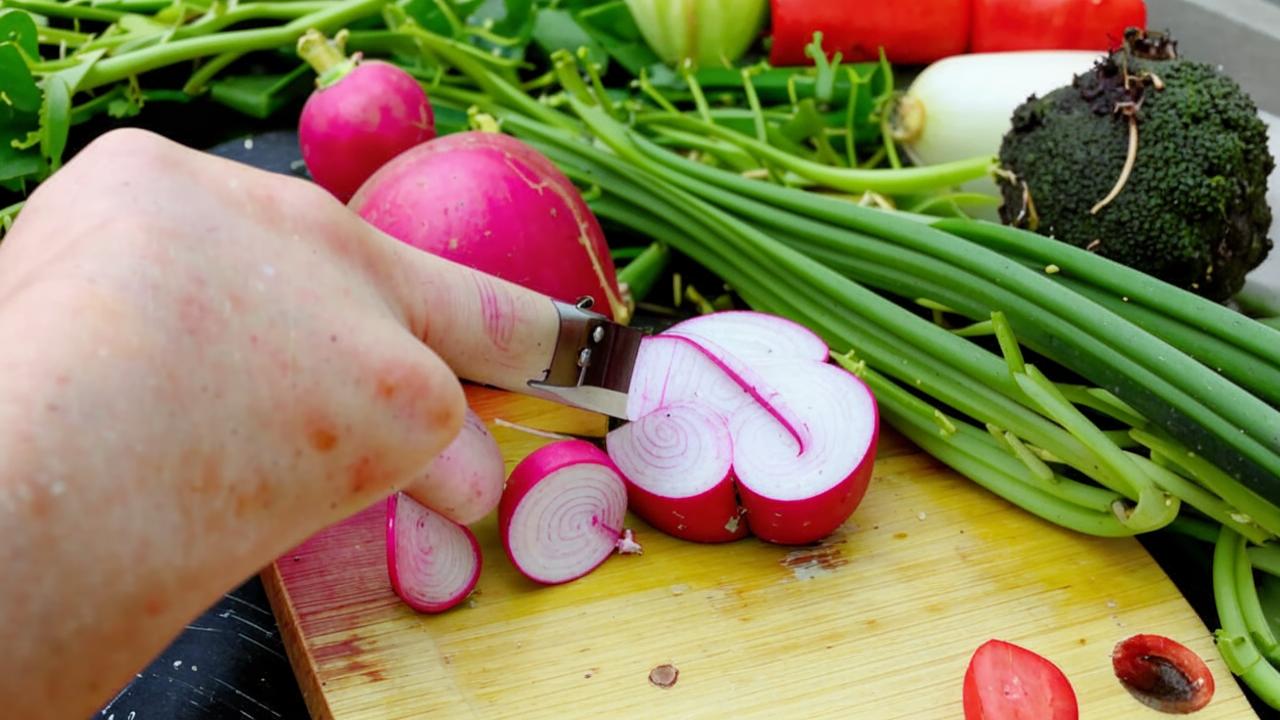
Low-calorie root vegetable (28 kcal per 100 g) is suitable for dietary nutrition and is useful for people with diabetes (turnips have a low glycemic index). The product can be baked, boiled or eaten raw.
Turnips contain glucoraphanin, a substance with anti-cancer properties that helps to eliminate toxins from the body.
Important: people with stomach ulcers, acute colitis, gastroenteritis and other intestinal diseases should not eat raw turnips. Fresh root vegetables can provoke irritation of the gastrointestinal tract.
Radish
A unique root vegetable that can replenish the body’s daily need for magnesium, potassium and calcium, if you eat 100 g of this vegetable a day.
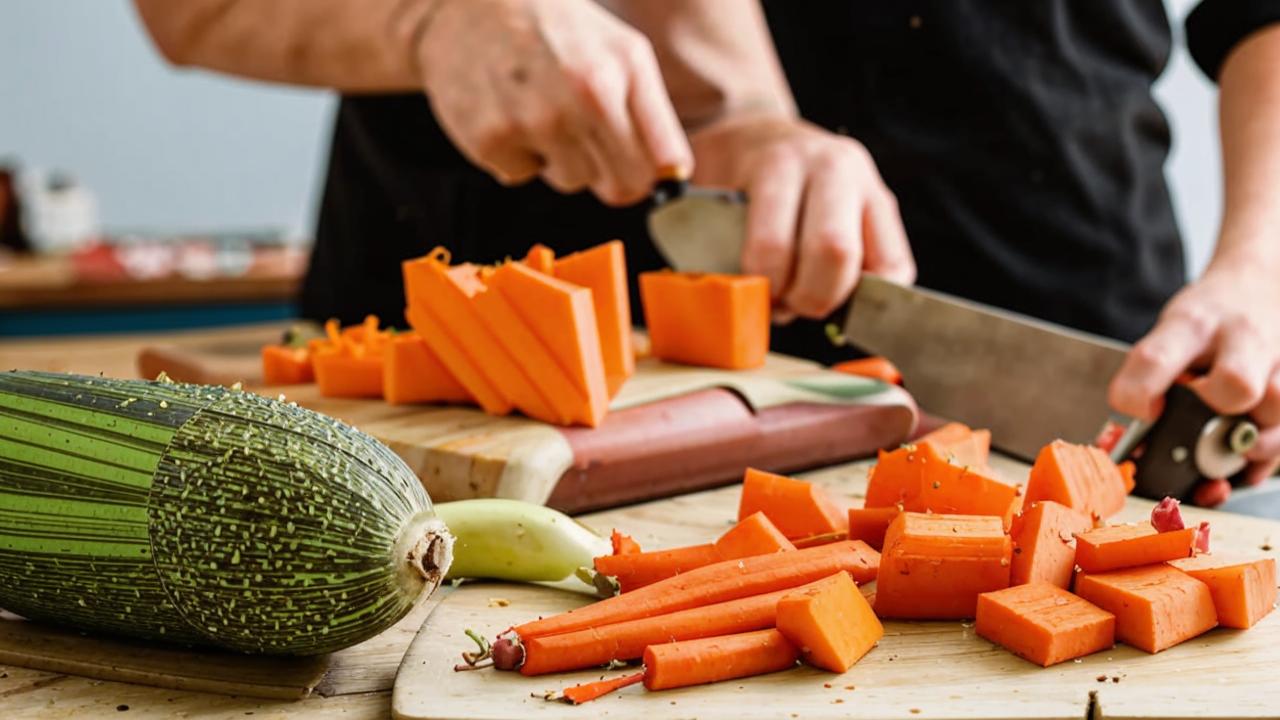
The radish has a rich vitamin composition (C, PP, B, B6, B2), which strengthens the immune system and eliminates deficiencies. It is considered a real natural antibiotic, because it actively fights pathogenic bacteria and protects against the attack of viruses. And it is also known for its high antioxidant activity and antimicrobial property.
Due to the content of essential and mustard oils in the radish, its use stimulates appetite (release of gastric juice), improves digestion, helps in the treatment of chronic hepatitis and cirrhosis of the liver (has a choleretic effect). It is best to use fresh root vegetables as an ingredient for salads.
Important: excessive consumption of radish can cause abdominal bloating, so it is not recommended to eat the product in diseases of the gastrointestinal tract.
Batat
A tasty analog of the classic potato, it can be consumed raw. Sweet potato tubers come in different varieties, but the most popular variety of yam is considered to be bougard (or beauregard). It has a short maturation period – about 90 days, the root crops are smooth, long, well stored.

Batata is rich in vitamins, fiber and nutrients. It is an excellent source of vegetable protein, carbohydrates, B vitamins, vitamin C, potassium and calcium.
100 g of the product contains up to two daily allowances of vitamin A, which is essential for eye health, skin elasticity and rapid wound healing. The antioxidant effect promotes collagen production.
Fat-soluble vitamin A is better absorbed in combination with fats, so it is recommended to consume the vegetable with the addition of vegetable oils.
It is important to note that one medium yam, baked in the peel, contains 15% of the daily norm of vegetable fiber.
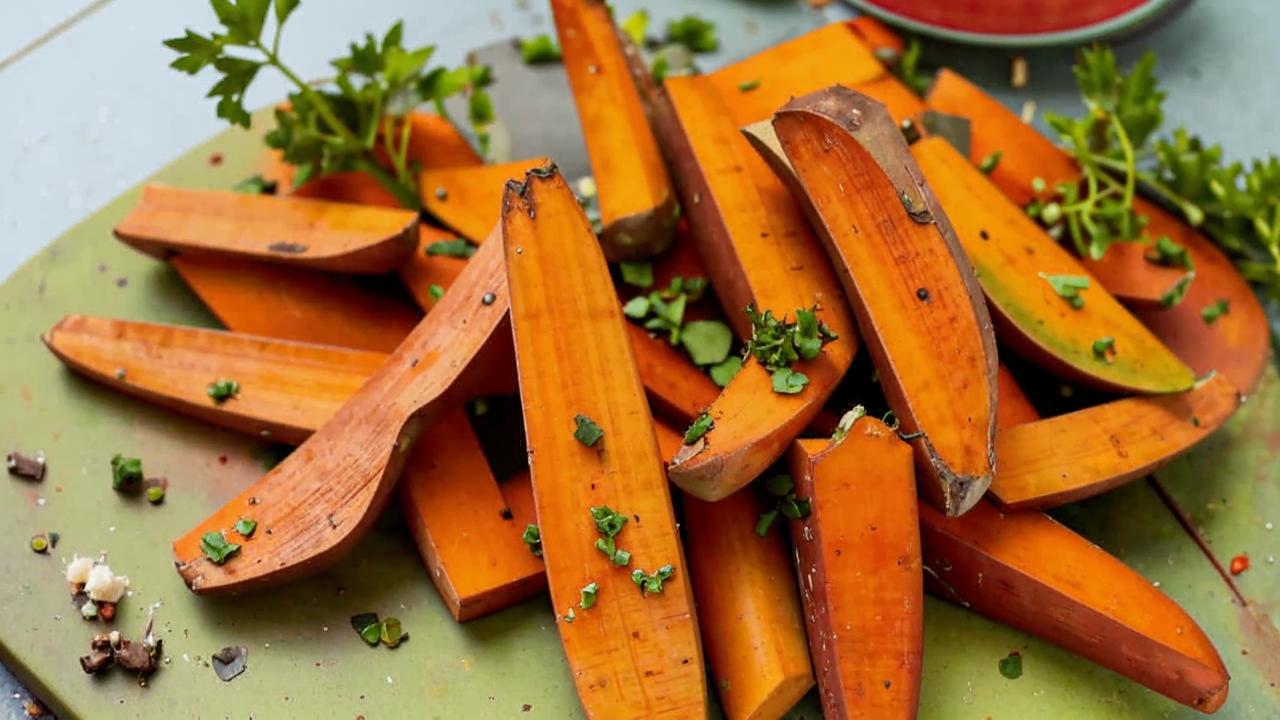
Root vegetables with a purple hue contain anthocyanins, which have antidiabetic, antitumor, anti-inflammatory and antimicrobial effects. Such products effectively protect against the development of obesity, reduce the risk of cardiovascular disease.
Cook yams in the skin to maximize the preservation of fiber and trace elements. It can be used to make healthy chips, casseroles, frittatas, baked fruits with vegetables and many other dishes.
Important: yams should be used with caution in ulcerative colitis, kidney pathologies, pregnancy and lactation, individual intolerance to the product.
Celery
Another useful root vegetable. You can eat the stem and root, which has a pleasant nutty flavor.
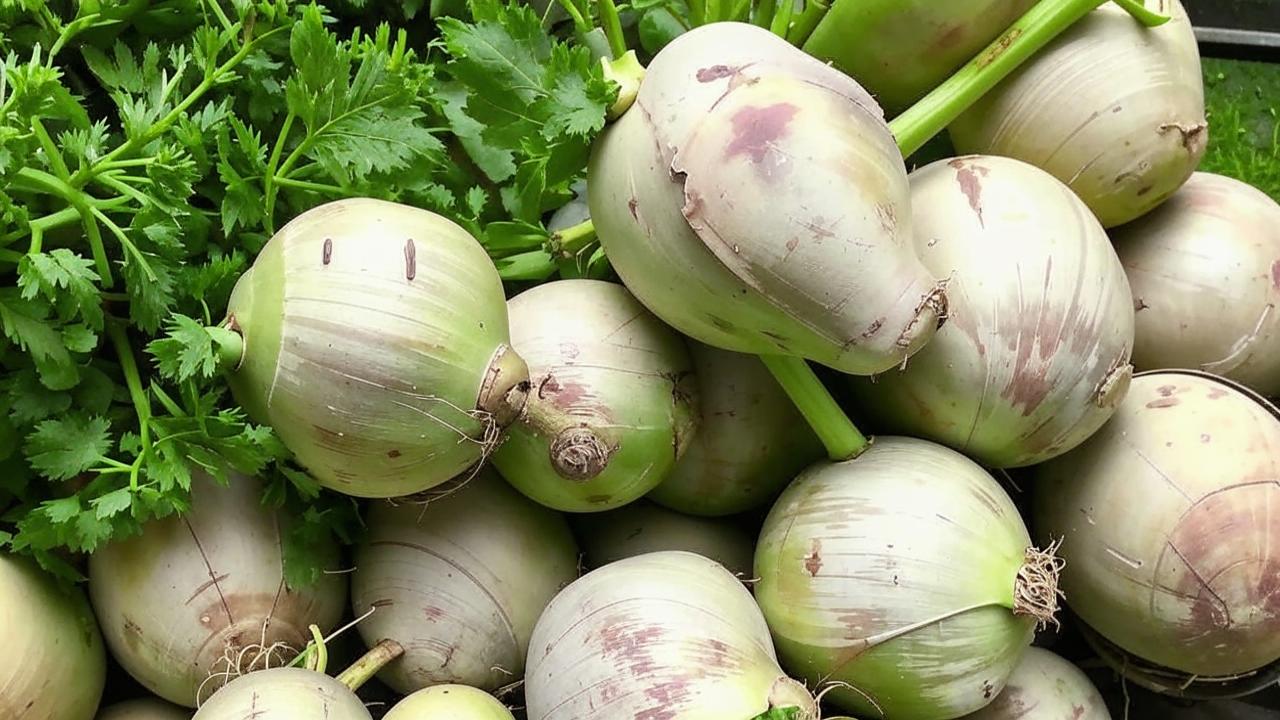
Celery contains vitamins C, B6, phosphorus and potassium. It is very useful for the cardiovascular system, helps control blood sugar and cholesterol levels. It also has anti-inflammatory, antifungal and antibacterial properties.
The product helps fight puffiness and removes excess fluid from the body. Excellent for dietary menus, it can be added as a component in smoothies for satiety.
Important: celery, like other root vegetables described above, is not recommended for gastrointestinal, kidney and liver diseases, gout, individual intolerance to the components of the product and during pregnancy.
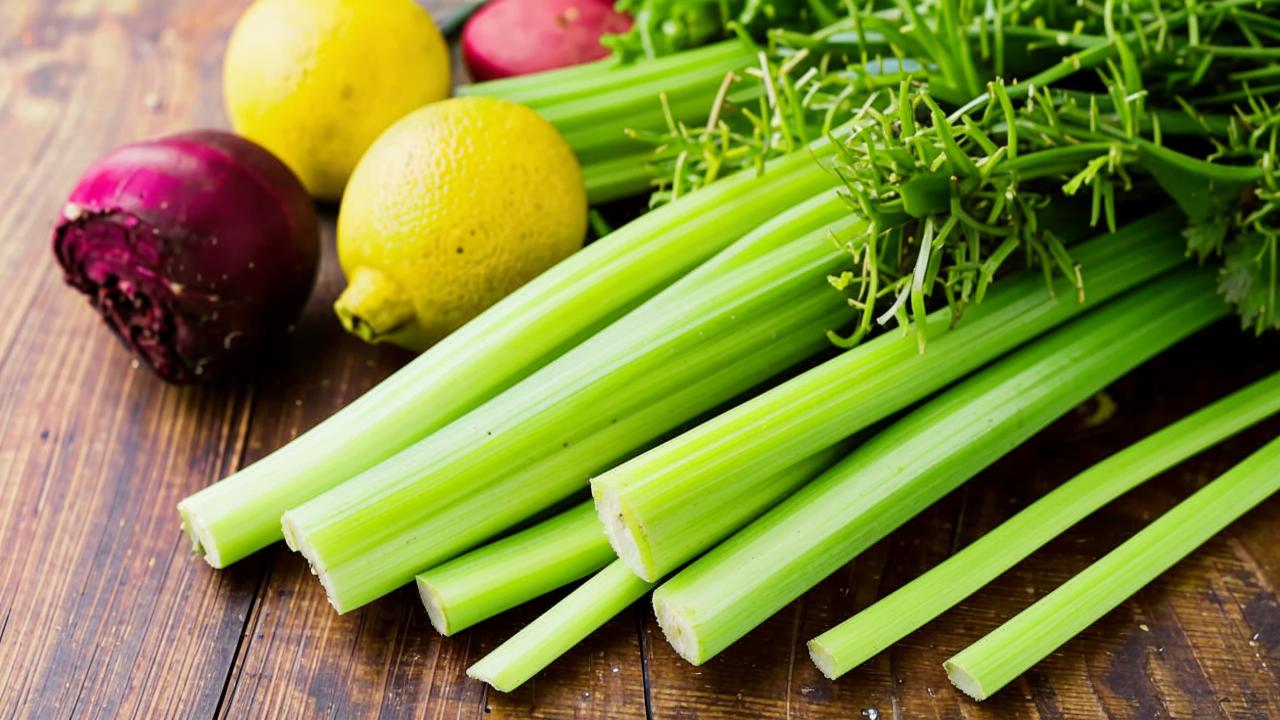
Despite the benefits of root vegetables, you should not overeat them. They contain a lot of starch, carbohydrates, sugars. Excess can lead to excess weight gain and metabolic disorders.
Do not forget to drink enough fluid – it can be not only pure water, but also unsweetened compotes and morsels, herbal teas.
It is useful to add dried fruits, herbs and spices to your diet, which will activate the protective functions of the immune system and help maintain health in winter.





